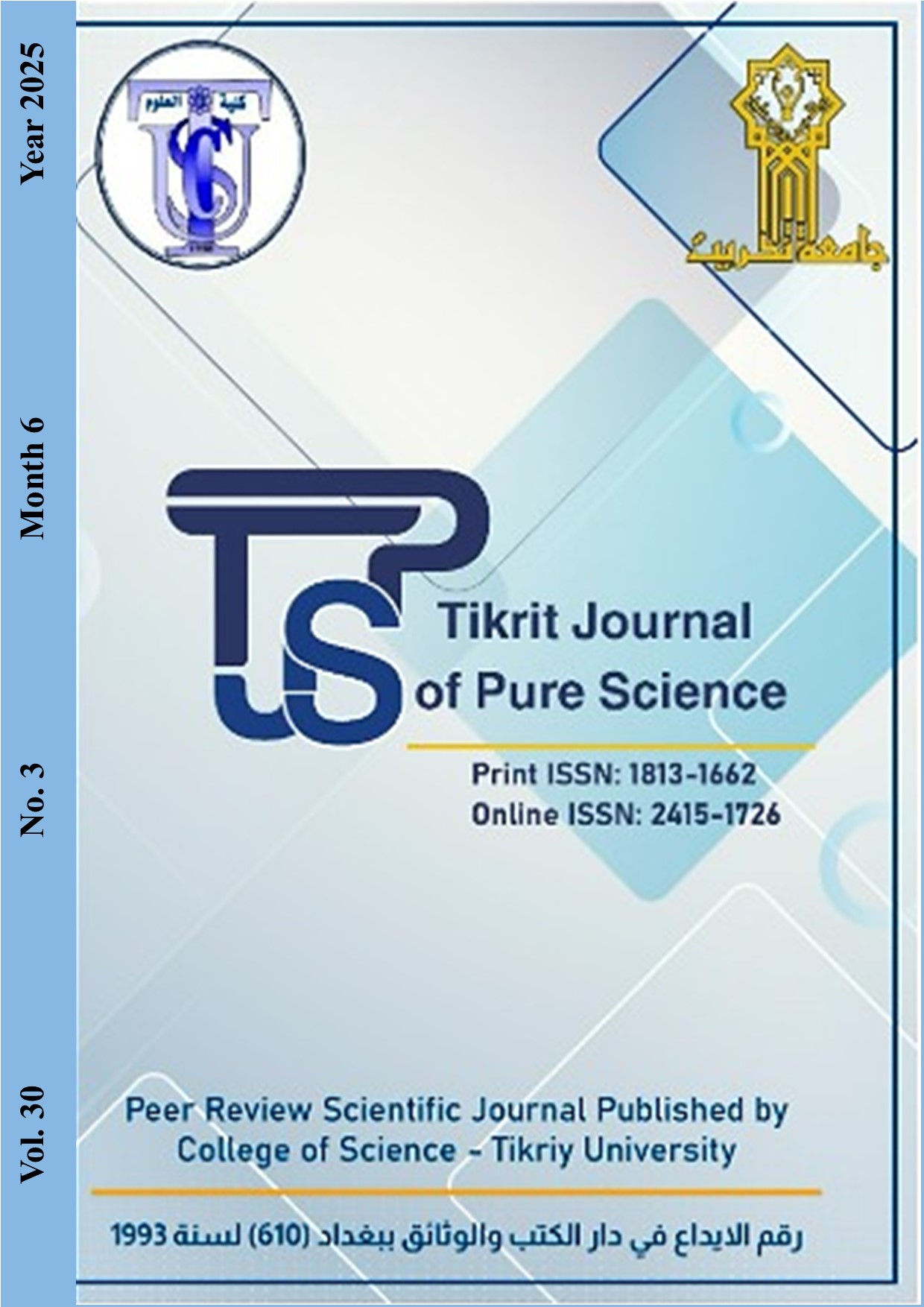Abstract
The laboratories of the Biology Department were used to conduct this investigation. at the College of Science - Tikrit University for the period from February 2024 to April 2024 and included the work of an aqueous and alcoholic extract of olive leaves. The study was conducted in two aspects, the first aspects is to show the effect of extracts (aqueous and alcoholic) of olive leaves using the diffusion method in the drilling, and the relationship was positive, i.e. whenever the higher the concentration of the extract, effect of its inhibitory becomes greater. The second aspects is to show the effect of antifungals on the yeasts used in the study. The results showed the effect of both the aqueous and alcoholic extracts at all concentrations. Candida albicanis yeast was more affected by the aqueous extract at a rate of inhibition diameter (16 mm), while Candida kefyr yeast was less affected by the aqueous extract at a rate of (12.2 mm). Candida glabrata yeast was more affected by the acetonic extract at a rate of (11.3 mm), while C.kyfer yeast was less affected by this extract at a rate of (6.5 mm). As for antifungals, a number of antifungals were used: Nystatin, Amphotericin, Clotrimazole, and Fluconazole. The antifungal Clotrimazole was the most effective, as it inhibited all the yeasts used in the study. The yeast C. glabrata was the most affected by this antifungal, with an inhibition diameter of (14 mm).
Keywords
Antifungals
Candida
Extract
olive leaves
respiratory system
Abstract
انجر هذا البحث في مختبرات قسم علوم الحياة _كلية العلوم _ جامعة تكريت للفترة من شباط 2024 الى نيسان 2024 وتضمنت عمل مستخلص مائي وكحولي لأوراق نبات الزيتون. أجريت الدراسة في محورين الأول بيان تأثير المستخلصات (المائي والكحولي) لأوراق نبات الزيتون باستخدام طريقة الانتشار في الحفر وكانت العلاقة طردية أي كلما زاد تركيز المستخلص زاد التأثير المثبط له. والمحور الثاني لبيان تأثير المضادات الفطرية على الخمائر المستخدمة في الدراسة. وقد أظهرت النتائج تأثير كل من المستخلص المائي والكحولي وبجميع التراكيز. وكانت خميرةC. albicans اكثر تأثراً بالمستخلص المائي وبمعدل (16 mm) اما خميرة C. kefyr فكانت اقل تأثرا بالمستخلص المائي وبمعدل (12.2 mm) .بينما خميرة C. glabrata فكانت اكثر تأثراً بالمستخلص الكحولي وبمعدل (11.3 mm) اما خميرة C. kyfer فكانت اقل تأثرا بهذا المستخلص وبمعدل (6.5 mm) وفيما يخص المضادات الفطرية حيث تم استخدام عدد من المضادات الفطرية Nystatin, Amphotericin, Clotrimazole, Flluconazoleفكان المضاد الفطريClotrimazole الأكثر فعالية حيث قام بتثبيط جميع الخمائر المستخدمة في الدراسة وكانت خميرة C. glabrata اكثر تأثرا بهذا المضاد وبقطر تثبيط (14 mm).
